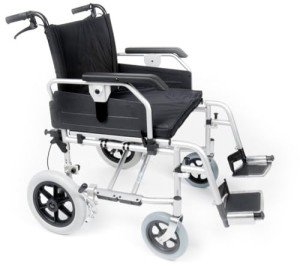Extra Wide Bariatric Wheelchair With 24" Seat
Frame
Wheelchairs are generally made in a standard width of 16" (narrow adult), 18" (standard grownup) or 20" (wide adult). However, some wheelchair users need a seat width larger than these standards. These additional broad bariatric wheelchairs are typically fitted by an expert and based upon the user's measurements.

In order to get the most comfortable and protected ride for passengers, it is essential that wheelchairs are properly sized. This indicates that the wheelchair should have the ability to accommodate the user's size while being able to navigate in tight areas. This is why BriteLift uses tailored automobiles to transport wheelchair passengers. This includes vans that can securely drive and maneuver big wheelchairs, permitting them to feel safe and comfy in every ride. This is the only way to supply the most effective transportation for wheelchair guests.
Seat
Bariatric wheelchairs are bigger than basic wheelchairs and are created to accommodate individuals who are heavier or broader. This extra broad bariatric wheelchair from Medline features a 24" seat and a carbon steel frame with rust- and chip-resistant chrome plating. The wheelchair has tool-free push-button adjustable footrests and easy-to-clean vinyl upholstery. It can support up to 500 lbs.
When picking the right wheelchair width, it is very important to measure the user sitting usually on a flat surface area throughout their best part of the lap which is normally their hips. It is also recommended that you use a yardstick instead of a measuring tape as it tends to provide a more accurate measurement. If bariatric folding wheelchair will be wearing a winter coat then an extra 2" should be contributed to the measurement of their seat width.
Weight Capacity
A bariatric wheelchair is generally larger and heavier than standard wheelchairs. This is why they need more cautious maneuvering. Chauffeurs require to be trained in dealing with these travelers. Additionally, cars need to have enough space for these chairs as well as ramps and wheelchair lifts. In addition, they require to know how to set up these trips beforehand.
When deciding on the chair width, it is essential to determine the user's widest point in the seat, which is typically the hips. Numerous wheelchair makers also provide a yardstick that can be utilized to aid with this measurement. When determining an individual's width, it is best to take the measurement straight throughout and not cover the tape around their hips which can offer an incorrect reading.
In some cases, the best part of a person's thighs may be larger than their hips so this should be taken into consideration when selecting the chair width. In these instances, it is often essential to add an additional 2" to the chair width.
In basic, the weight capacity of a bariatric wheelchair should not be surpassed under any situations or severe injury may result. When utilizing the chair, constantly be sure that it is on a steady and level surface area with front casters pointing forward and wheel locks engaged. In addition, never ever lean or shift the center of gravity while sitting in the chair.
